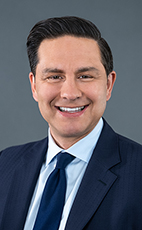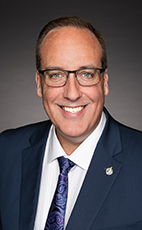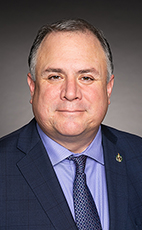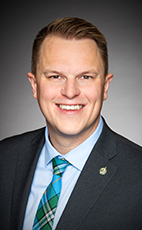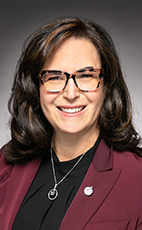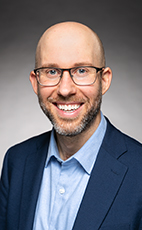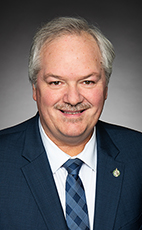44th Parl. 1st Sess.
May 9, 2024 10:00AM
- May/9/24 11:22:17 a.m.
- Watch
Mr. Speaker, that is false. I have sat down with mothers who are affected by drug overdoses, right across this country, who reflect the view of almost all those who are survivors of drug overdoses and drug addictions. They are nearly unanimous in their opposition to the NDP-Liberal radical agenda of giving out hard drugs.
They want their loved ones in treatment and recovery so that they can be brought home drug-free, happy and healthy, and that is the hopeful future that we offer.
86 words
- Hear!
- Rabble!
- add
- star_border
- share
- May/9/24 11:22:50 a.m.
- Watch
The hon. member for Courtenay—Alberni is rising on a point of order.
14 words
- Hear!
- Rabble!
- add
- star_border
- share
- May/9/24 11:22:57 a.m.
- Watch
Mr. Speaker, this is such a serious issue. I asked a serious question and what I got was a condescending answer—
22 words
- Hear!
- Rabble!
- add
- star_border
- share
- May/9/24 11:23:09 a.m.
- Watch
I would not know if this was a point of debate or not, because I cannot hear it. However, I am going to guess it was a point of debate.
Continuing debate, the hon. member for Mission—Matsqui—Fraser Canyon.
42 words
- Hear!
- Rabble!
- add
- star_border
- share
- May/9/24 11:23:15 a.m.
- Watch
Mr. Speaker, when I was 10 years old, I had a similar experience in Gastown, British Columbia, in the Downtown Eastside in Vancouver. I remember driving in with my mom for the very first time and being shocked about the chaos and despair I saw, even as a young boy. Anyone who goes to that neighbourhood in Vancouver sees that chaos. Unfortunately, now, that addictions crisis has spread right across the country and into every community in British Columbia. People are struggling. People are dying, and something needs to change. However, 15 months ago, this Liberal-NDP government launched a wacko, hard-drug legalization policy that has led to even more crime, more chaos, more drugs and more disorder, especially in British Columbia.
While the opioid addiction crisis has accelerated in severity in recent years, it is not a new problem. In 2009, Doctors of BC, formerly known as the BC Medical Association, published a policy paper entitled “Stepping Forward: Improving Addiction Care in BC ”. The paper made 10 recommendations, including “Formally recognizing addiction as a chronic, treatable disease under the BC Primary Care Charter and the BC Chronic Disease Management Program”.
The recommendations state, and this is crucial, “Create and fund 240 new flexible medically supervised detoxification spaces”, as well as “Fund the development of 600 new addiction-treatment beds across the province”.
Fifteen years later, the availability of treatment beds has not improved. In fact, it has only gotten worse. However, nowhere in that paper did it suggest that making drugs like fentanyl, heroin, crack and meth legal would help British Columbians.
Today, the leading cause of death for youth aged 10 to 18 in my province is overdose; it is drug toxicity. Let that sink in. In 2023, more than 2,500 British Columbians lost their lives to illicit drug overdoses. More than six British Columbians lose their life every day due to deadly drugs. Since 2016, there have been 42,000 people lost to the opioid crisis across Canada, and since the Prime Minister took office, opioid overdose deaths have increased 166%.
The main argument the government has made in support of this reckless legalization and decriminalization policy was that it would reduce the stigma surrounding addiction. In reality, it has only made that stigma worse. Canadians are good people. They are compassionate people, but that compassion is evaporating quickly as crime and chaos increase in conjunction with the radical policies of the government, and I will give an example.
Last October, the Abbotsford Soccer Association published an open letter to the City of Abbotsford, decrying the state of their fields and calling for change. It reads:
The state of sports facilities, especially soccer pitches, within the city, is nothing short of lamentable.
It goes on to say this:
Abbotsford Soccer Association (ASA) members are witnessing an increased incidence of individuals with substance abuse disorder loitering on the grounds of [Matsqui rec centre] which has subsequently led to the increased presence of drug apparatus scattered on the fields and surrounding walkways including syringes and needles, and shattered crack pipes and liquor bottles.
It is not acceptable for any parent or any child to face those conditions when going to play sports.
The letter goes on to outline that community parks are the most common place for children to be injured by dirty needles and that children “imitate the behaviours” that they see around them. In other words, what is happening at Matsqui rec centre is normalizing drug behaviour, and kids are being exposed to that.
The government knew from the start that its wacko policy of allowing open drug use in public would put children at risk, but it went ahead with it anyway. That is shameful, and it is a complete dereliction of its duty to protect children.
At the Legion in Mission, veterans have to clean up dirty needles and have to ask people to stop smoking crack on their property, daily. That goes for every business in the downtown Mission core. It is like the Liberal government has created a crack tax because their windows are shattered, and they have to have haz-mat materials on site to clean up because of the possibility of fentanyl.
In Mission, there was an addictions clinic operated by Dr. Larina Reyes-Smith, which provided addictions care, STI screening, counselling and more. Dr. Reyes-Smith is a strong advocate for increased access to detox treatment and treatment of mental illness rather than the so-called safe supply model being pursued by the government and the Province of B.C. In October, she came to me distressed because she was forced to close her clinic due to high costs and a lack of support from the provincial government, which did not understand her approach to wraparound care, nor the quality of care she gave to those people desperate to get off drugs and live a better life.
Physicians continue to speak out, saying that treatment funding needs to be under the same umbrella as primary care so it can be billed to provincial health coverage, but that, frustratingly, is not the case. Even in publicly funded detox centres, patients are charged a per diem out of pocket, making it extremely challenging for those struggling with addiction to access life-saving treatment.
Why is the emphasis not on bolstering the number of addictions doctors rather than on legalizing hard drugs and leaving people to die on their own? Why is the focus not on building the infrastructure we so desperately need in order to address the crisis?
The opioid crisis is not limited just to B.C. either. Last fall, the town of Belleville, Ontario, declared a state of emergency after 23 people overdosed in two days. Belleville is only a little bit bigger than Mission. In a town of just over 50,000 people, 23 people overdosed in just under 48 hours. Again, let that sink in. This is the stuff being normalized in Canada. Thirteen of the overdoses took place in just two hours.
Now the government is contemplating allowing more cities and provinces to make the same mistake British Columbia did. As a British Columbian, I am scared that the Prime Minister will expand this wacko policy and that other provincial governments will make the same mistake ours did. That is why the Conservatives today are calling for the government to do four things. The first is to proactively and clearly reject the City of Toronto's request to the federal government to make deadly hard drugs like crack cocaine, heroin and meth legal.
Secondly, the motion calls on the Prime Minister to “reject the City of Montreal's vote calling on the federal government to make deadly hard drugs legal.”
Third is to deny any active or future requests from provinces, territories and municipalities seeking federal approval to make deadly hard drugs legal in their jurisdiction. Fourth is to end taxpayer-funded narcotics and redirect the money into treatment and recovery programs for drug addiction.
Every day, 22 Canadians lose their life to this deadly crisis, and the government is only making the problem worse. Therefore I call on all members of the House to support our motion today and put an end to the wacko and deadly hard drug legalization experiment once and for all so we can focus on getting people access to the treatment, recovery and supports they desperately need.
Canadians love that our country is peaceful. They love an orderly country. That is being taken away from them because of the radical ideological approach. Let us bring our loved ones home.
1282 words
- Hear!
- Rabble!
- add
- star_border
- share
- May/9/24 11:31:39 a.m.
- Watch
Mr. Speaker, I truly appreciate that the party opposite is talking about treatment, because treatment is a critical and definitely core piece of our actions and policy when it comes to addressing the overdose crisis. However, actions speak louder than words. Would the member commit to sustained funding on treatment, unlike the previous Conservative government that cut two-thirds of drug treatment funding?
63 words
- Hear!
- Rabble!
- add
- star_border
- share
- May/9/24 11:32:14 a.m.
- Watch
Mr. Speaker, the basis of that question is completely false. Under former prime minister Stephen Harper, health care funding to the provinces increased on an incremental basis. We never reduced funding for health care. We provided for the demands of the provinces and territories at that time.
47 words
- Hear!
- Rabble!
- add
- star_border
- share
- May/9/24 11:32:37 a.m.
- Watch
Mr. Speaker, first of all, I want to acknowledge and offer my condolences to all those who have lost loved ones to the toxic substance crisis. In particular, I lost my own cousin Peter in his twenties as a result of the toxic substance crisis. I really would like for us to be talking about solutions on how we can help people.
I am wondering whether the member can share why he is taking the approach he is, when we know that in British Columbia, which has a person-centred, multi-faceted approach, the death rates have been reduced in the last 12 months by 11%. When we compare that to Alberta, which has a treatment-only model, and treatment is an important pillar of course, instead we are seeing that Alberta has the leading death rate per capita of all the provinces, with Lethbridge having three times B.C.'s death rate.
Does the number of people who are so tragically dying in B.C. versus Alberta contradict what the member is saying in his speech?
177 words
- Hear!
- Rabble!
- add
- star_border
- share
- May/9/24 11:33:47 a.m.
- Watch
Mr. Speaker, as I outlined in my speech, the crisis we are facing is not limited just to British Columbia. I think the real question the member for Nanaimo—Ladysmith needs to consider is why her ideologically extreme premier, Mr. Eby, has done a 180 on the policy. That goes to the very point I made in my speech, which is that parents do not want drug addiction normalized in our communities. Parents want to be able to go to downtown Nanaimo, downtown Mission or downtown Abbotsford and access a recreational centre without being fearful of being exposed to a methamphetamine.
102 words
- Hear!
- Rabble!
- add
- star_border
- share
- May/9/24 11:34:30 a.m.
- Watch
Mr. Speaker, I am glad to hear the Conservatives have woken up to the poison drug crisis in this country. When it comes to solutions, the reality is that Alberta has already done everything that is being called for in the motion, and Alberta has the largest number of deaths per capita in the country.
Will the member meet with moms who have lost their kids to poison drugs so we can get some real solutions to a real crisis?
80 words
- Hear!
- Rabble!
- add
- star_border
- share
- May/9/24 11:34:56 a.m.
- Watch
Mr. Speaker, I wish the member for Kitchener Centre would follow my social media a little more closely. I have met with dozens of parents who have lost their kids to the overdose crisis.
In fact in the last year I met with a mother whose son had overdosed while at a treatment home because open drug use was allowed there. That mother lost her child. Afterwards, on the one-year anniversary of his death, I went to a reception hosted by the mother to feed some of the people her son used to hang out with, at the Diamond Head Motor Inn in Mission. I asked some of the people currently addicted to drugs, and those who have been addicted, whether safe supply is making a difference. They said, “The government is just laughable because we are just selling the drugs. What has happened is a joke, a complete joke.” They know it and we know it. We need to stop it.
165 words
- Hear!
- Rabble!
- add
- star_border
- share
- May/9/24 11:36:00 a.m.
- Watch
Mr. Speaker, a bit earlier the leader of the Conservative Party refused to explain the difference between legalization and decriminalization. The latter does not allow people to consume drugs wherever they want. Rather, it ensures that people with a drug problem are not systematically dealt with by the prison system and can get the care they need. This all stems from the fact that drug dependency or addiction is a public health issue.
I would simply like to know—
80 words
- Hear!
- Rabble!
- add
- star_border
- share
- May/9/24 11:36:30 a.m.
- Watch
I must interrupt the hon. member.
I think we have an interpretation problem. I want to make sure the hon. member for Mission—Matsqui—Fraser Canyon understands what I am saying in French. I hope the interpretation is working.
It is working now. The hon. member for Saint-Jean.
51 words
- Hear!
- Rabble!
- add
- star_border
- share
- May/9/24 11:36:53 a.m.
- Watch
Mr. Speaker, the Conservative Party leader refused to answer the question by one of my colleagues, who asked him to give us the definition for legalization as opposed to decriminalization. This is important in the debate we are currently having.
Decriminalization does not allow people to systematically consume drugs everywhere. It allows us to ensure, in cases substance abuse, that the person will not necessarily go to prison, but can receive adequate care. We consider drug addiction to be a public health issue.
My question for the member is simple: Does he consider drug addiction to be a public health issue?
101 words
- Hear!
- Rabble!
- add
- star_border
- share
- May/9/24 11:37:33 a.m.
- Watch
Mr. Speaker, the Bloc Québécois member did not listen to my speech today. I said it was a problem. The 2009 report that I mentioned states that the government has to start treating drug addiction like other chronic diseases.
43 words
- Hear!
- Rabble!
- add
- star_border
- share
- May/9/24 11:38:10 a.m.
- Watch
Mr. Speaker, I will be sharing my time today with the member for Thunder Bay—Superior North.
I rise today for the families of loved ones, who have lost the people most precious to them due to an overdose. I rise for the parents I have spoken to who have lost children and for the neighbours who have lost friends. I rise for those whose stories I have heard from across this country, people with lived and living experience, and for the many advocates I have met with who are called to do this work on the front lines and who fight against this crisis each and every day. I think of the mothers who have taught me that harm reduction and health care belong to all of us, everywhere, that people who are dead cannot recover or get into treatment, and that together we can make a change.
Each of these conversations has highlighted that a full spectrum of health services, including harm reduction is needed to meet people where they are, with dignity and compassionate care. These are the voices that drive our fight to save lives. Sharing these voices is our job as parliamentarians. To do that, we need to listen to them.
However, the Leader of the Opposition refused and continues to refuse to even meet with or learn from the many mothers, fathers, families and communities we need to listen to in order to better shape substance use policies. He is a leader who has weaponized and dehumanized our most vulnerable in society who need critical health care. He has done it to sow fear and to bring back the failed policies of the war-on-drugs era. This is not leadership.
We must look at the crisis, step into the eye of the storm that it is and do what needs to be done. We must use this moment and every tool we have at our disposal to fight the crisis, because doing nothing is not an option. The fact is that an ever-changing, ever more deadly toxic drug supply in the streets is killing our loved ones every day. It is the increase in fentanyl in the illegal supply that is driving the overdose crisis. This crisis is complex and all-pervasive. It leaves no community untouched. It cuts across ethnic groups, age, sex, geography and socio-economic status. Any plan forward must look at the full picture and see that there is no one-size-fits-all solution to meet this moment.
That is why, on this side of the House, we are guided by the renewed Canadian drugs and substances strategy to address the overdose crisis and other substance use harms. This is Canada's model. It is compassionate, comprehensive and person-centred. It is a holistic approach that balances health, social well-being and public safety. It recognizes that we need to keep doing more to help people and to keep our communities safe. This includes a full continuum of culturally appropriate and equitable supports and services for Canadians across the spectrum of prevention, harm reduction and treatment and recovery.
We need to place a high priority on children and youth, providing young people with the tools and supports to prevent, delay and lower the rates of their substance use. We want to curb substance use from the beginning and keep our communities safe.
With every policy and every program under the Canadian drugs and substances strategy, we consider potential risks and benefits through a public health lens and a public safety lens. We have also been prepared to adjust our approach as needed to reflect what is actually happening on the ground and what is working. Governing is deciding. Sometimes we may not get it right on the first try, but we owe it to those whom we serve and are trying to save to do everything we can.
We are working with partners to take action against criminal organizations that are trafficking and producing illegal drugs. We are leveraging all tools at our disposal to work toward an end to this national public health crisis. However, in this work, we have supported and will continue to support provinces and territories, indigenous communities and organizations so they can deliver the full suite of resources that are needed.
Building on historic health care investments, including those for mental health and substance use from last year, budget 2024 provides $150 million for a new emergency treatment fund for municipalities and indigenous communities to be able to respond rapidly to the emergent and critical needs related to this opioid crisis, such as in Belleville.
This commitment is in addition to the $1 billion we have directly invested to address this crisis, recognizing that all levels of government have a role to play to help Canadians and save lives. Collectively, the new investments we are making and funding will help provinces and territories expand the delivery of timely, quality and accessible mental health and substance use services across the country, as well as reduce harms, prevent overdoses, reduce stigma and save lives.
When it comes to substance use, our top priority continues to be protecting the health and well-being of people across Canada. To do that, we need an approach that puts health first while maintaining community safety, one that is compassionate, equitable, collaborative and based on evidence. The work of community-based organizations is a key part of this equation. Through the substance use and addictions program, we are supporting community organizations in delivering innovative prevention, harm reduction, treatment and recovery on the front lines and other evidence-based health interventions that are so desperately needed. These grassroots organizations have the trust of their communities and the first-hand knowledge needed to make a real difference in people's lives.
We know the main driver of the overdose crisis in Canada is the toxic and unpredictable illegal drug supply. It is contaminated by fentanyl. On any given day, it is likely that many people do not know what or how much they are even using. As a first step, we need to give people a chance to access the health and social services they need to improve their well-being. A dead person cannot recover.
The programs those in the opposition are against are health care. How can they be opposed to Canadians seeing a doctor? Why do they not trust doctors to make the best decisions in collaboration with their patients? People who use drugs are just that: people. They are not numbers, not props for a video. They are people who need our compassion. That is why we are pursuing an innovative and evidence-based harm reduction program, including supervised consumption sites, drug checking and naloxone. All of those tools are needed and so much more, because addressing this complex and evolving crisis requires us to continue to try new and innovative approaches. This is how we meet the moment to help save lives and better connect people who use substances to health and social services, health care for those who are ready.
Let me conclude with one very simple and straightforward principle. This is a public health crisis, not a criminal one. The Leader of the Opposition believed it at some point when he said, “opioid addiction is a disease and its victims are victims”, but victims have no place in prison. This is what advocates and experts remind us every single day. Our primary goal is to save lives and improve health while maintaining public safety. We need to reduce the barriers to health care, not build them up and perpetuate the stigma of criminalization.
I am proud of the comprehensive model that our government is advancing, one that helps reduce stigma and promotes access to a range of evidence-based services. Let us also talk about the bravery of the health care workers, the experts and frontline peer workers who are on the front lines every single day, meeting the moment and seeing who needs our help. We will continue to support their work and the work of the provinces, territories and other jurisdictions. We have to.
We will continue to support an approach that will help divert people away from using drugs, but also away from the criminal justice system and toward health and social services, because we cannot look away. We cannot put those who need our compassion and health care into forced treatment to become someone else's problem. It has never been more important for all levels of government to be working together because when people get the right support, there is hope and we can save lives.
1450 words
- Hear!
- Rabble!
- add
- star_border
- share
- May/9/24 11:47:51 a.m.
- Watch
Mr. Speaker, during my speech, I referenced Dr. Reyes-Smith and her attempt to provide the wraparound services that she felt her patients needed. I will note that she was one of the authors of the 2009 report I referenced as well. Dr. Reyes-Smith is a small business corporation, like every other doctor in the province of B.C. When doctors face their ability to operate, they have to work within a funding system that does not allow for wraparound care.
Why has the Government of Canada, with the $4.5 billion that it has not delivered on mental health yet, not tried to change that and allow for an innovative solution that allows a doctor in B.C. to provide wraparound services and treat the mental health addiction crisis more like primary care instead of a one-off visit with a patient?
144 words
- Hear!
- Rabble!
- add
- star_border
- share
- May/9/24 11:48:51 a.m.
- Watch
Mr. Speaker, I want to thank the hon. member for acknowledging that this is a health care crisis, as opposed to the Leader of the Opposition, who continues to dehumanize and criminalize those who need health care.
It is a great opportunity to highlight our comprehensive approach, which is a wraparound approach for addressing substance use in Canada. It is a four-pillar approach that includes prevention, harm reduction, treatment and enforcement, and also recovery. We recognize that meeting people where they are at, with a full suite of supports, with every tool at our disposal, is exactly what we are doing.
102 words
- Hear!
- Rabble!
- add
- star_border
- share
- May/9/24 11:49:34 a.m.
- Watch
Mr. Speaker, I was listening to the Conservative leader's response to one of my colleagues who was asking him to make the distinction between legalization, decriminalization and diversion. He said it was just semantics, that there was no real difference, that people just made up those distinctions depending on the context.
What does the minister think of the Conservative leader's ignorance?
63 words
- Hear!
- Rabble!
- add
- star_border
- share
- May/9/24 11:50:13 a.m.
- Watch
Mr. Speaker, this is exactly the point. The Leader of the Opposition and the party opposite create narratives that simply are not in the reality of what we need to be addressing right now. Decriminalization is about ensuring that someone who uses substances is not subject to prosecution. It does not legalize the many drugs that he listed. It means that we are opening a door for someone who is struggling to access health care, rather than stigmatizing them.
Why would we want to criminalize our loved ones? Why would we not want to get them into health care?
This is exactly why we have every tool available to us and we are working with jurisdictions to address this, because we need to meet people where they are and meet the moment to save lives.
135 words
- Hear!
- Rabble!
- add
- star_border
- share
- menumenu
- notificationsnotifications
- home
- mailmail
- searchsearch



